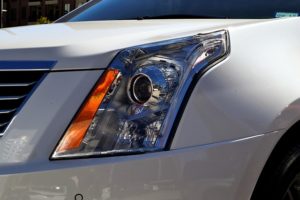
The risks inherent in self-driving vehicles
It is certainly logical to ask whether self-driving vehicles are actually safe operating on the streets. It would seem they are inherently dangerous because there is no physical human being inside the vehicle operating it and using their judgment in doing so. Of course, humans make mistakes, too. But, there are some cases that demonstrate the risks are all too real.
On March 19, 2018, an Uber self-driving car in Arizona struck and killed a pedestrian who was crossing at a crosswalk. She was pronounced dead at the hospital after the accident. Although this is the first reported fatal accident involving a self-driving vehicle, it demonstrates the risks that still exist even with advanced technology. Uber responded by suspending its self-driving vehicle operations nationally until their investigation uncovers what went wrong.
Imposing liability for self-driving cars
Some believe that a self-driving car actually eliminates accidents because technology or robotics are more precise. However, the reality is autonomous vehicles cannot entirely eliminate car accidents. In addition to the recent death in Arizona, there have been several other accidents and malfunctions. So, who is at fault for these errors?
Obviously, if a self-driving car is involved in an accident, there is no actual driver who can be held responsible. Many times, issues of product liability are applicable because you are dealing with a piece of machinery and a computer. If it was a human driver, then legal theories of negligence would be applicable. The only way to hold a computer responsible is by suing the entity that created and/or programmed the computer. Since self-driving vehicles are complicated pieces of equipment, there are other legal issues involved, as well.
Determining Who to Sue for Car Accident Injuries
In order to recover after a car accident, you have to first determine who is at fault. Liability cannot be placed on anyone until it is determined who caused the accident or put another way, whose negligence lead to your injuries. Depending on how serious the car accident is, there could be very significant repair costs and medical bills. The person who is determined to be at fault is the person responsible for reimbursing the victim for their damages.
Determining who to sue for an autonomous vehicle accident
Considering the fatal Uber accident in Arizona, most likely Uber would be responsible for the pedestrian’s death. However, it depends on the actual error that is determined to have been the cause of the accident. The responsibility could fall on the company that manufactured the vehicle or the computer, the software developer or even manufacturers of various parts or components of the vehicle or computer.
What you should know about determining fault
Sometimes, the most important aspect in a lawsuit is who is at fault in a car accident. In states which permit identifying one party as liable, this is often the most complicated and heated debate. Below is an explanation of how to identify who is at fault for an accident and how such determination can affect an award of damages. With help determining these issues, let our Joplin personal injury attorney know.
Why does determining fault matter so much?
The issue of fault is the most important aspect of a lawsuit because without knowing who the party is you should sue, you cannot recover. If you do not determine who that person or entity is, that party could escape financial liability for the accident. If more than one party is accused of liability, determining who is at fault requires identifying the levels of fault. In other words, each party will only be responsible for the amount of damages that can be attributed to his or her actions.
How to go about proving fault
Proving fault in the legal context discovering and offering evidence. The necessary evidence typically includes photos of the accident scene and injuries, eyewitness testimony and police reports. Depending on the applicable legal standard in your state, fault can be established either proven beyond any reasonable doubt or through clear and convincing evidence. Either way, the standard of proof is relatively low as the allegations of fault do not have to be indisputable. Our Joplin personal injury attorney can help you make sure your rights are protected.
If you have questions regarding car accidents or any other personal injury matters in Arkansas or Missouri, please contact the Cottrell Law Office for a free consultation. You can contact us either online or by calling us toll-free at (888) 433-4861.


